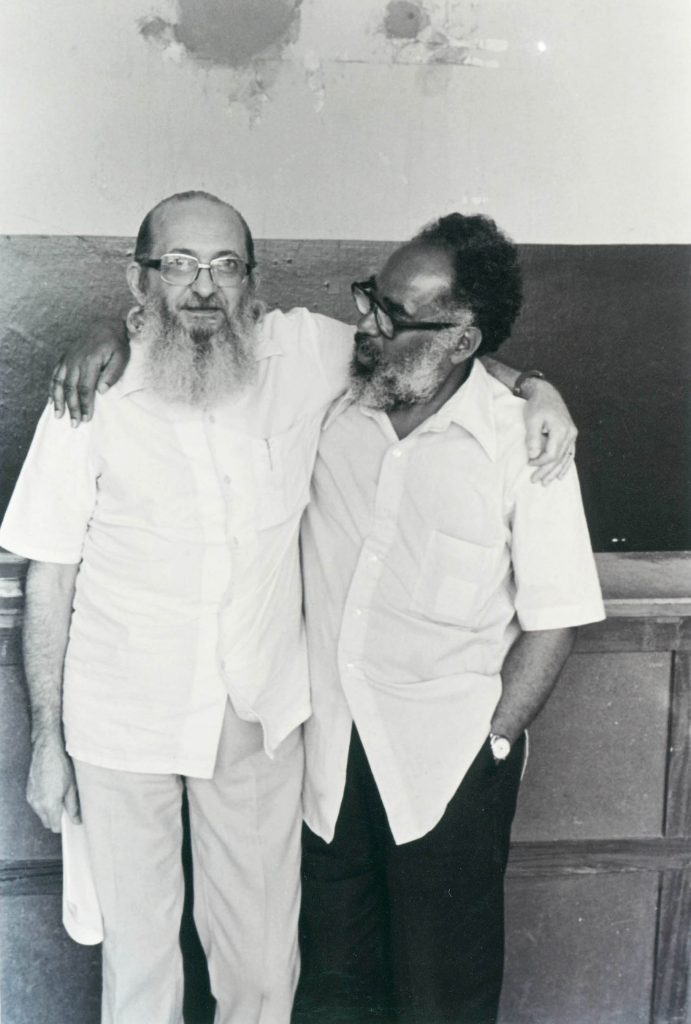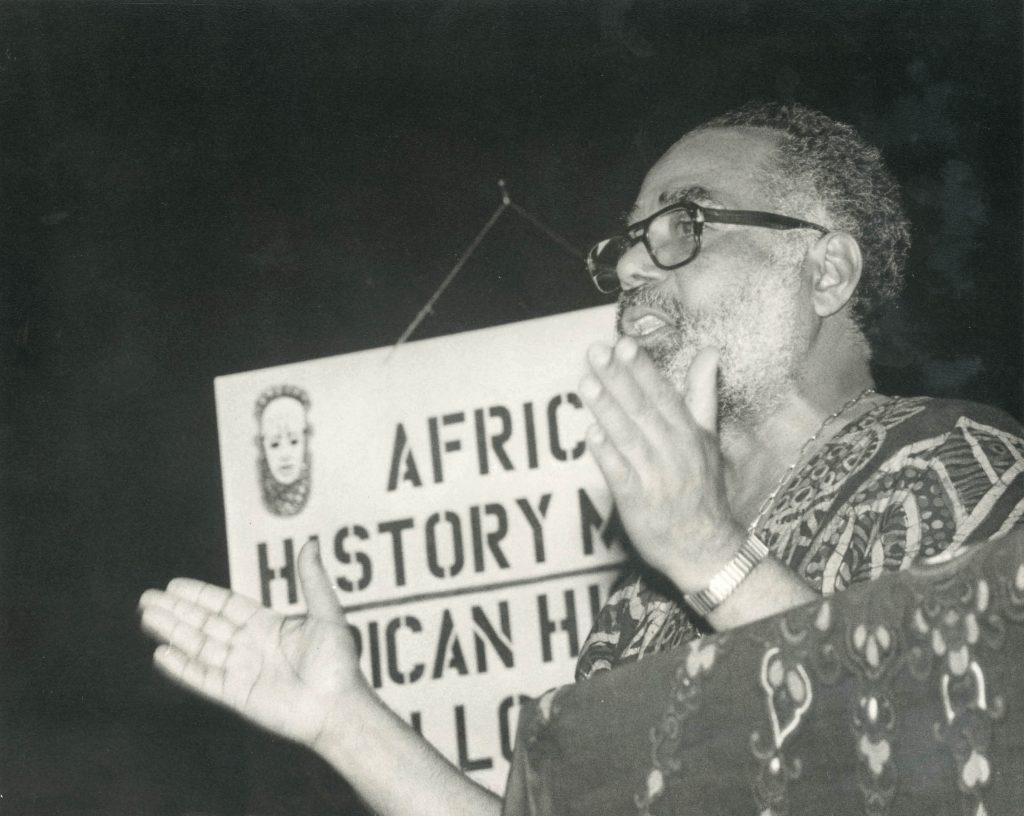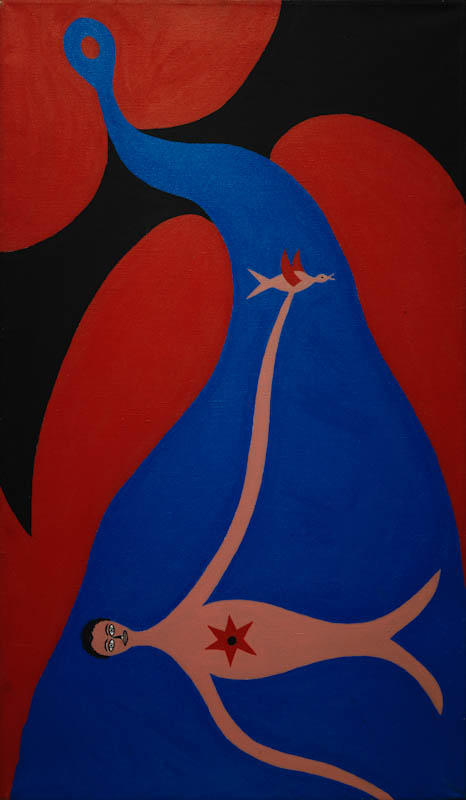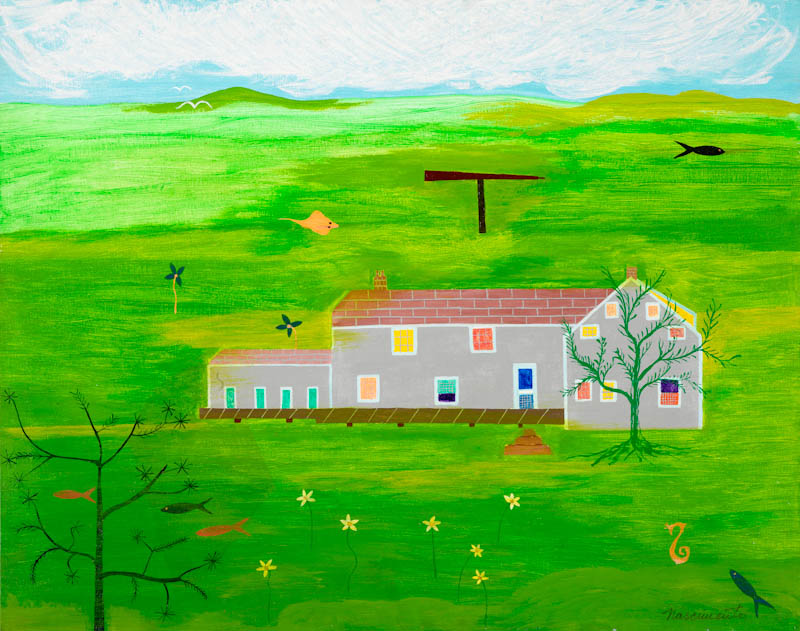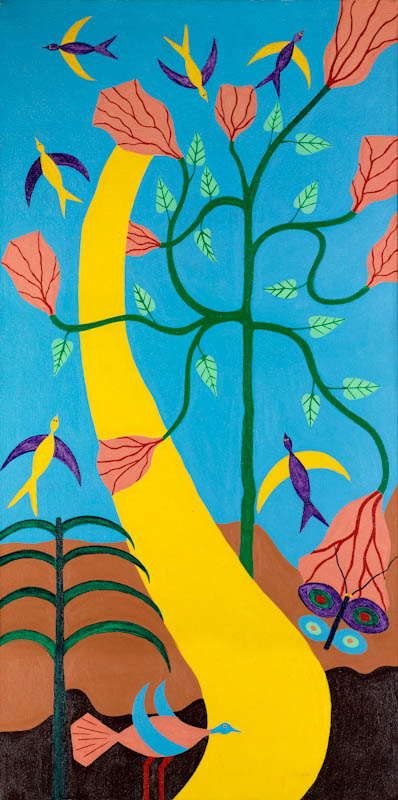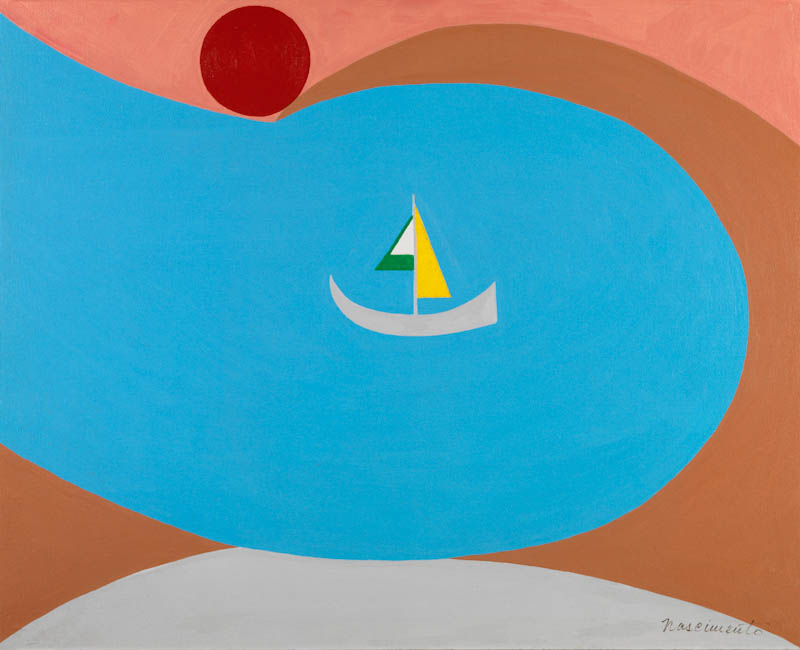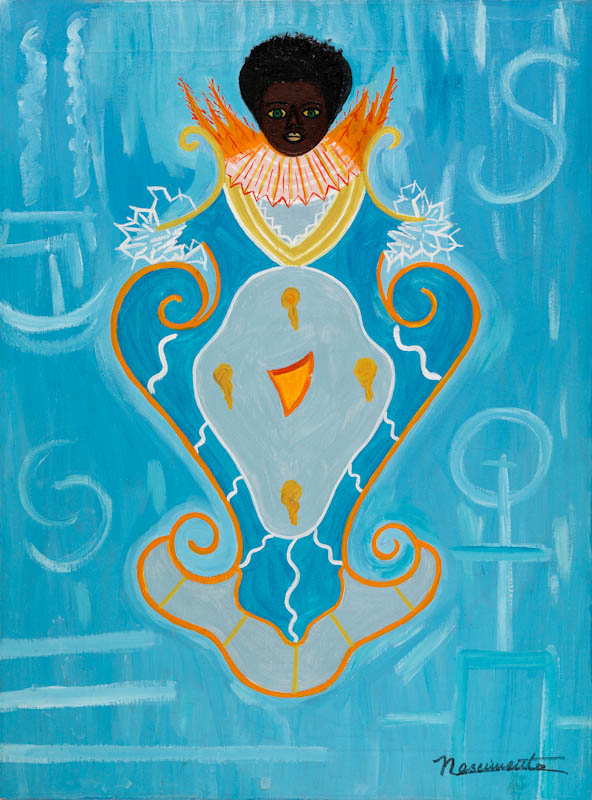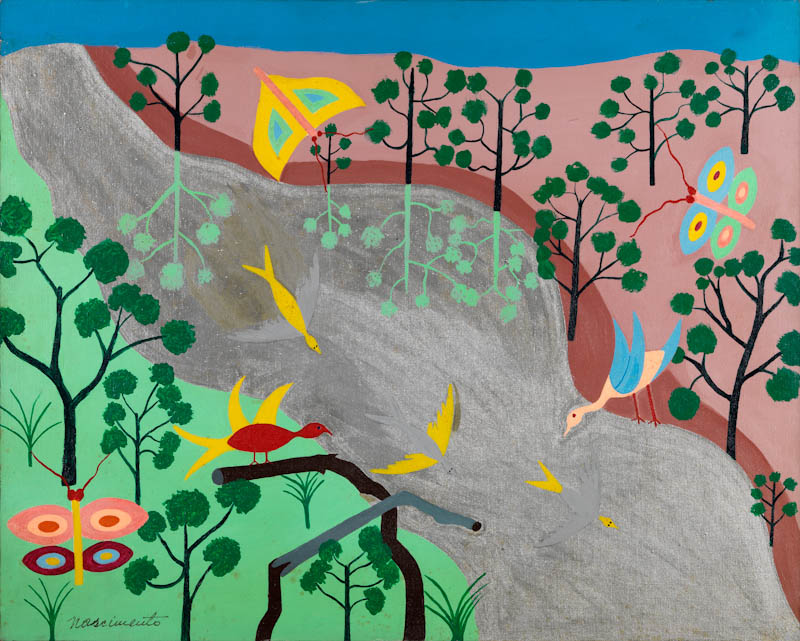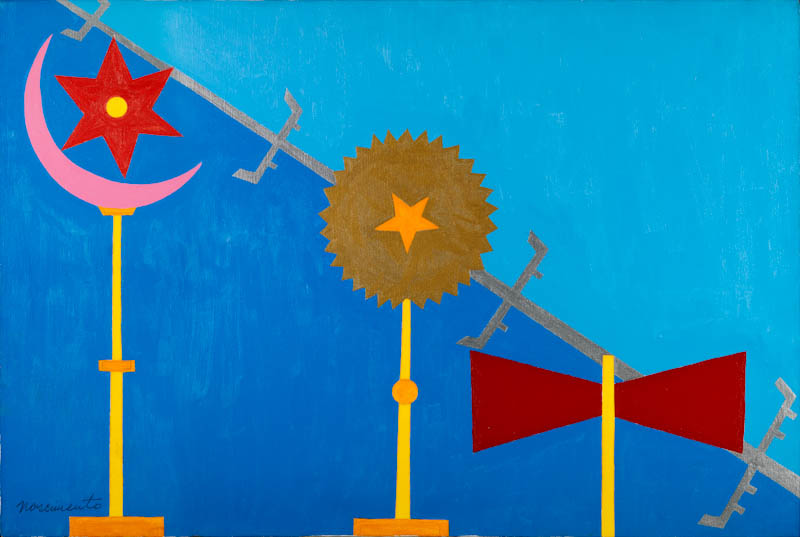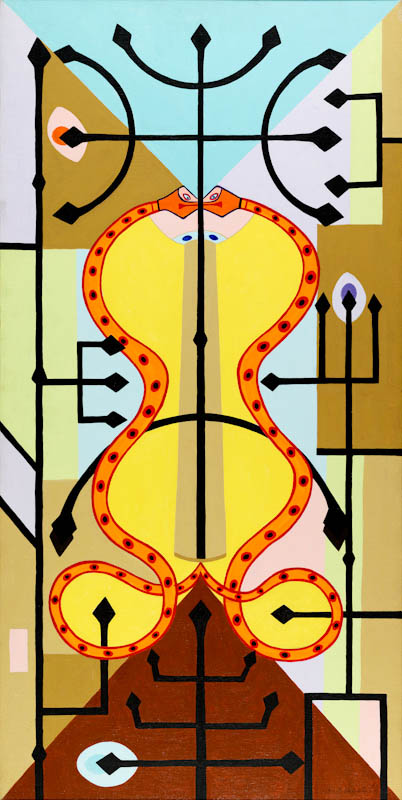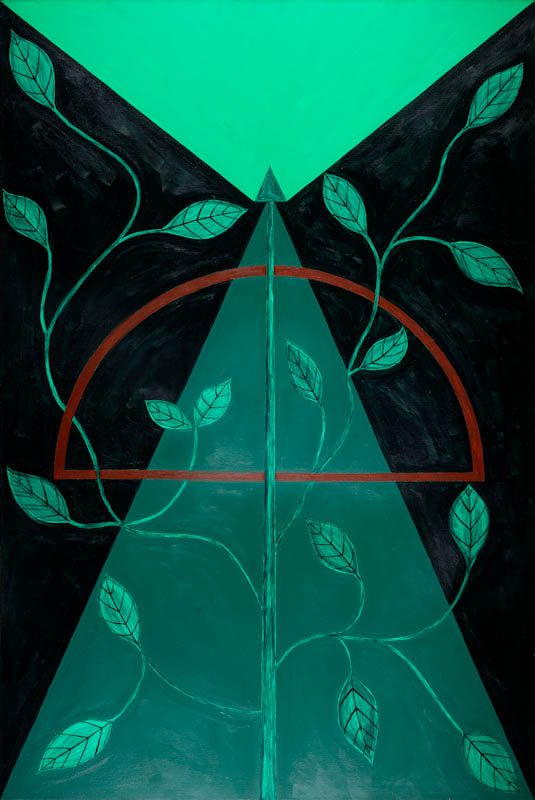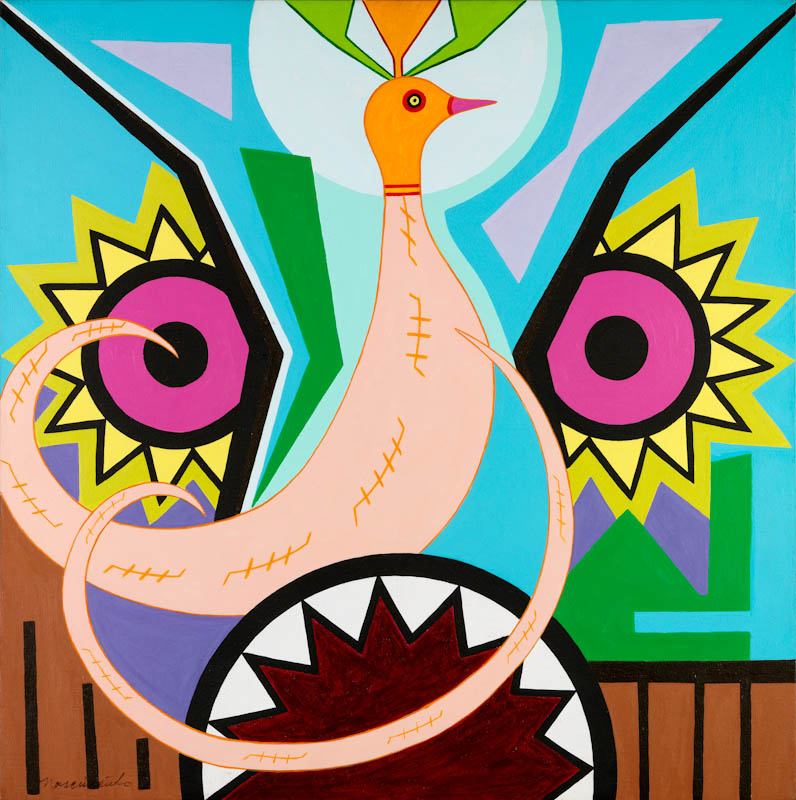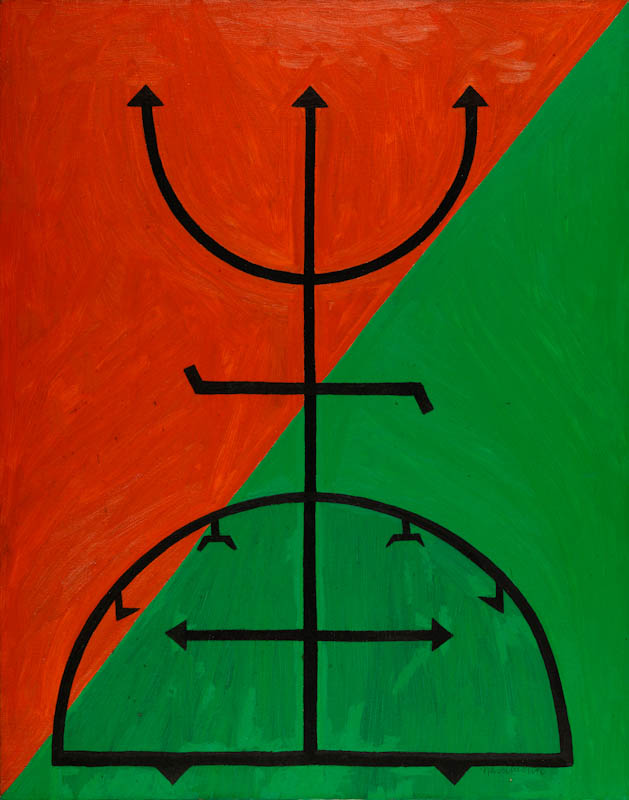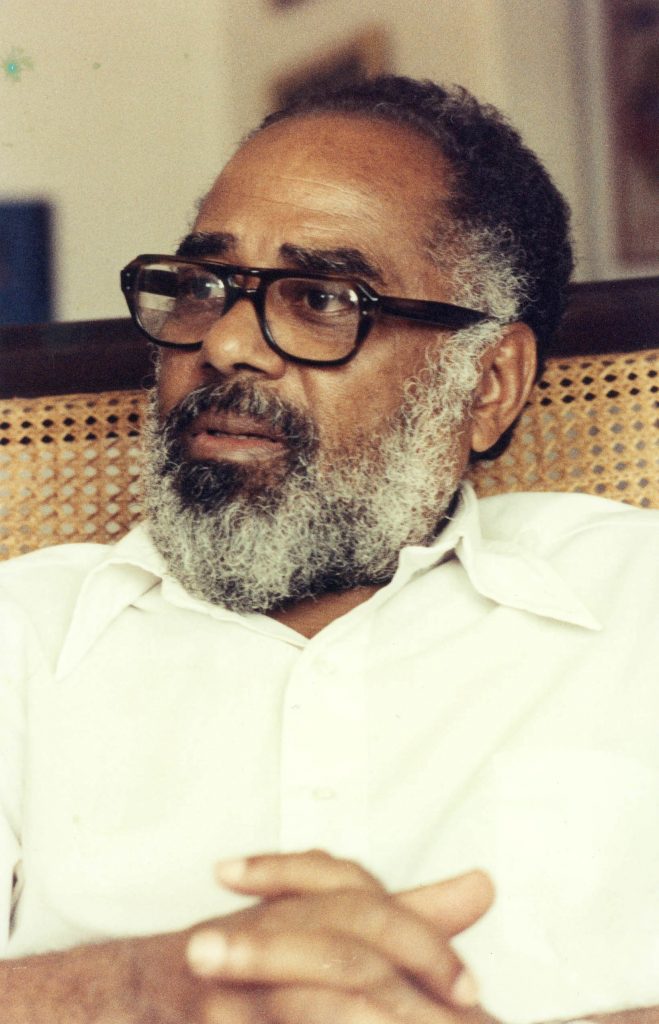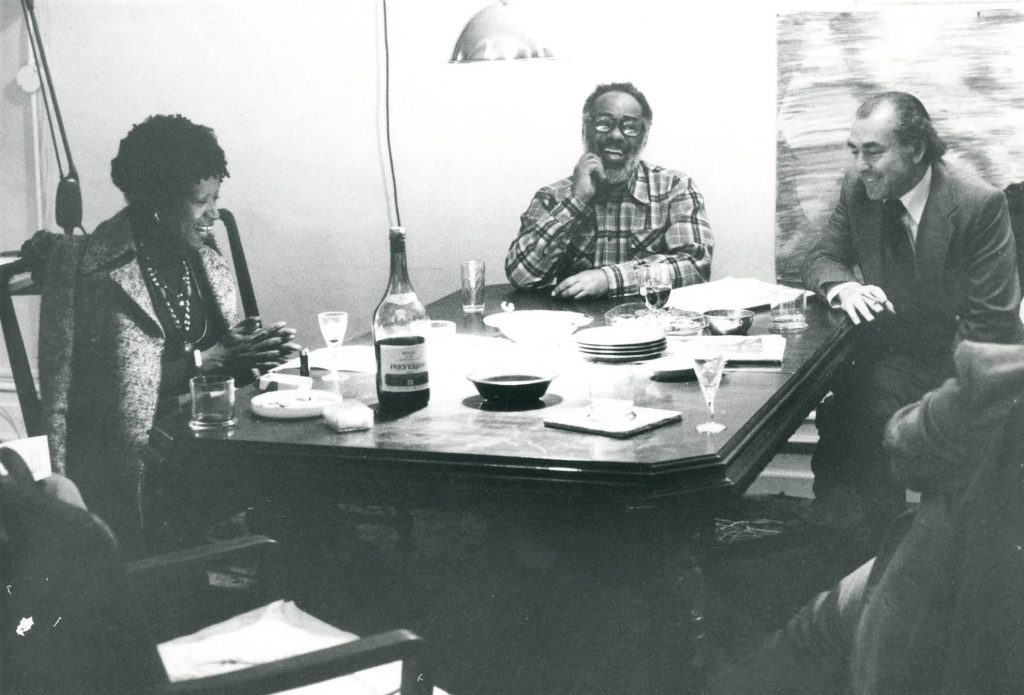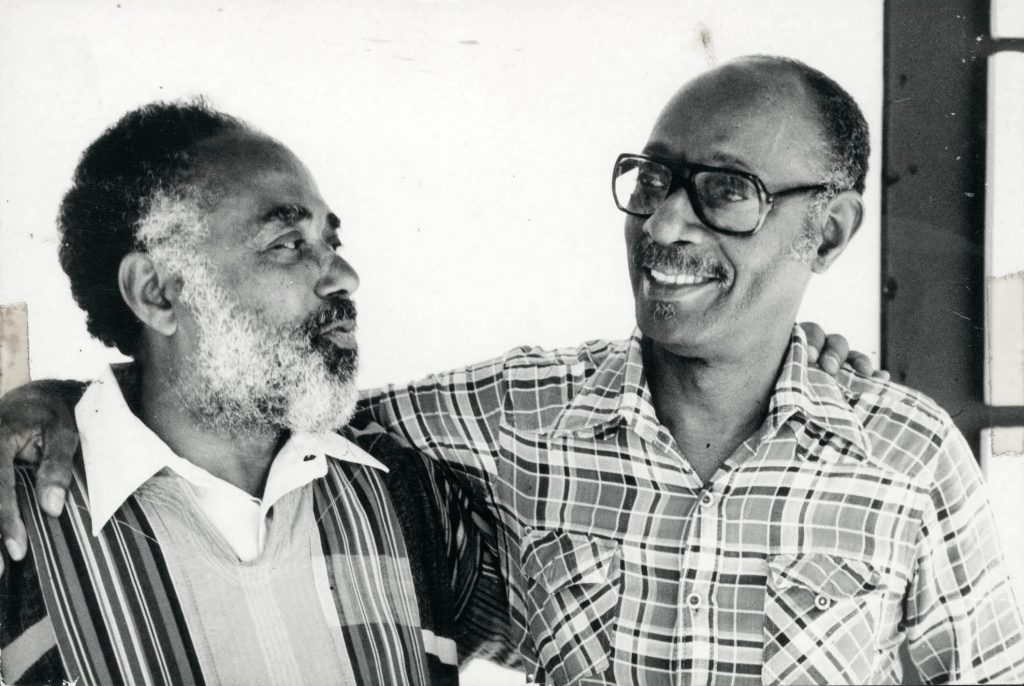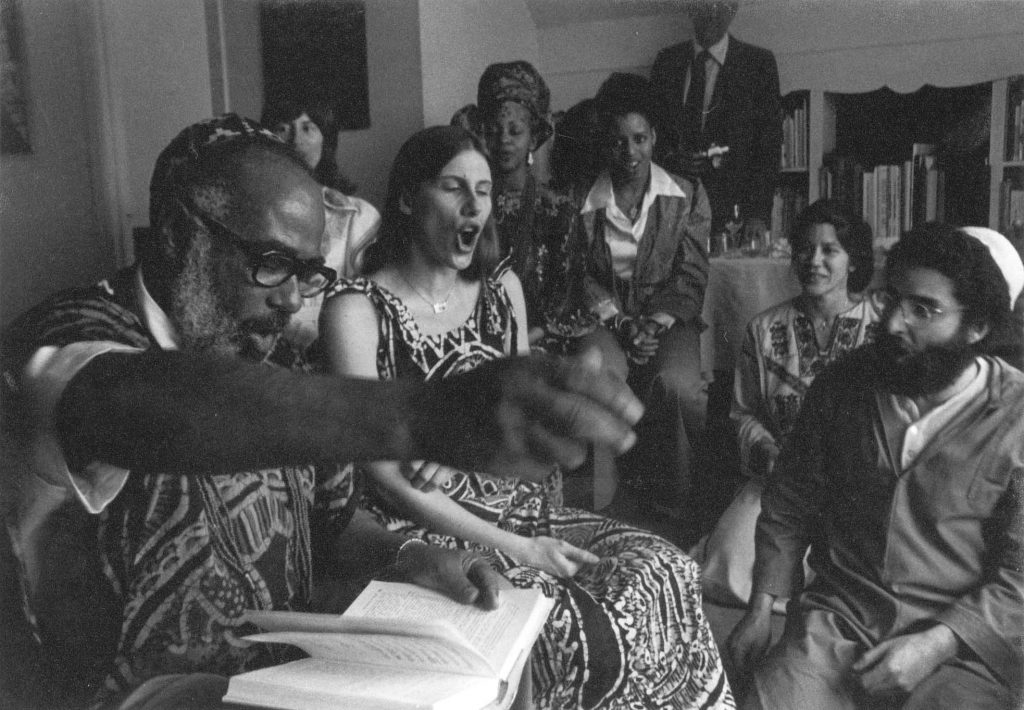
Exile
(1968-1981)
Abdias Nascimento lived 13 years in exile, from 1968 to 1981. In fact, the period spent out of Brazil – especially in the United States, with a one-year sojourn in Nigeria between 1976 and 1977 – was a self-exile. Abdias was not plainly forced to leave the country, even though the political scene was not the most appropriate for a man who had been an activist of the black movement and active in a number of events and circumstances since the 1950s.
The trip to the United States occurred on account of a scholarship granted by the Fairfield Foundation, New York, meant to last two months at first. On enactment of the Institutional Act No. 5 (AI-5) in Brazil in December 1968, a milestone of the rampant persecution of opponents of the military regime, it became appropriate for Abdias to look for ways to extend his stay abroad.
During the time in which he lived overseas, he worked as a visiting professor at universities – such as Yale and Wesleyan — and finally took off as a fine artist. It was there where he executed most of his paintings and was invited to have them displayed in various exhibitions and to curate.
Also during this fertile period, Abdias came into contact with the Pan-Africanism, an ideology that was heavily discussed in the congresses he started to attend during his self-exile. The term Pan-Africanism is understood as the movement advocating the union of all the peoples from Africa in order to strengthen the continent in the international arena. Being a foreigner – a Brazilian in the United States – and being an integral part of this diaspora as well – Brazilian and of African origin – strengthen the Pan-Africanist concept in Abdias’s worldview.
In a dissertation submitted to the Department of Sociology at the Faculdade de Filosofia, Letras e Ciências Humanas at Universidade de São Paulo (FFLCH/USP), Tulio Augusto Samuel Custódio discusses Abdias’s self-exile and to what extent this event changed his life and his activism practice. “Nascimento goes to self-exile as an artist and returns as a leader. His ideological rhetoric at the time went on to incorporate transnational elements, such as Pan-Africanism and Afrocentricity, which give him new meaning to think about black culture and the racial issue in Brazil. In addition to this tone in his ideology, the author revisits Abdias’s history itself. He reads his past experiences in the light of a new perspective of black identity that is now transnational and diasporic,” he points out in a passage of his dissertation.
Another remarkable event of the period spent in the United States was Abdias’s marriage with Elisa Larkin. He met the one who would become the mother of Osiris, his third child, and his life companion to share his struggle when he was hired as a professor with the State University of New York, in the city of Buffalo. The approach was made easier because Elisa, who had been an exchange student in Brazil as a teenager, could speak Portuguese. Abdias, despite having lived abroad for some years, did not speak English fluently, claiming that his giving in to a foreign language would be like being settled twice.
